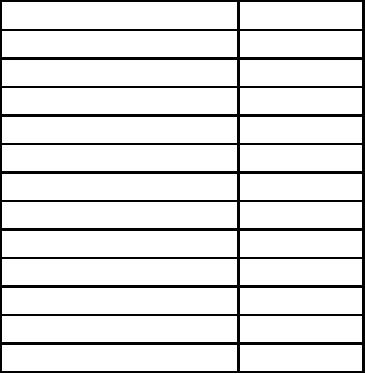
Storage
Table 10-16 lists some of the fluids with which you
may be required to work and the hazards associated
Fabricated tubing and tube assemblies requiring
with each one.
storage for any length of time should be provided with
protective closures at each end.
Table 10-16.--Hazards Associated with Various Fluids
Do not use pressure-sensitive tape as a substitute
for protective closures. Oxygen tube assemblies require
Contents
Hazard
protection of the entire assembly in addition to
Air (under pressure)
PHDAN
protective closures at end fittings. The complete
assembly should be stored and packaged in sealed
Alcohol
FLAM
plastic bags in accordance with Aviation Crew Systems
Carbon dioxide
PHDAN
Manual Oxygen Equipment, NA 13-1-6.4.
Freon
PHDAN
TUBING AND TUBE ASSEMBLIES
Gaseous oxygen
PHDAN
MAINTENANCE PROCEDURES
Liquid nitrogen
PHDAN
Maintenance of tube assemblies at the
Liquid oxygen
PHDAN
organizational level is limited to inspection, removal,
installation, repair and replacement. Inspections are
LPG (liquid petroleum gas)
FLAM
performed during fabrication, installation, and on
Nitrogen gas
PHDAN
in-service equipment. During fabrication, inspect bulk
tubing and fittings before and during fabrication of a
Oils and greases
FLAM
tube assembly. Before replacing a defective tube
JP-5
FLAM
assembly, find the cause of failure, and inspect the tube
assembly before and after its installation. Inspect
Trichloroethylene
AAHM
in-service tube assemblies at regular intervals in
accordance with applicable maintenance directives.
For convenience in distinguishing one hydraulic
When you inspect the tube and tube assemblies for
line from another, each line is designated as to its
damage, look for chafing, galling, or fretting, which
function within the system. In general, the various
may reduce the ability of tubing to withstand internal
hydraulic lines are designated as follows:
pressure and vibration. Replace tubing that shows
Supply lines. Lines that carry fluid from the
visible penetration of the tube wall surface caused by
reservoir to the pumps are called supply (or suction)
chafing, galling, or fretting. Tubes that have damage
lines.
(nicks, scratches, or dents) caused by careless handling
of tools are acceptable if they meet the following
Pressure lines. Lines that carry only pressure are
requirements: Any dent that has a depth less than 20
called pressure lines. Pressure lines lead from the
percent of the tubing diameter is acceptable unless the
pumps to a pressure manifold, and from the pressure
dent is on the heel of a short bend radius. A nick or
manifold to the various selector valves, or they may run
scratch that has a depth of less than 15 percent of the
directly from the pump to the selector valve.
wall thickness of aluminum, aluminum alloy, or steel
Operating lines. Lines that alternately carry
tubing should be reworked by burnishing with hand
pressure to an actuating unit and return fluid from the
tools before it is acceptable. Any aluminum, aluminum
actuating unit are called operating lines, or working
alloy, or steel tubing carrying pressures greater than
lines. Each operating line is identified in the aircraft
100 psi with nicks or scratches greater than 15 percent
according to its specific function; for example,
of wall thickness should be replaced.
LANDING GEAR UP, LANDING GEAR DOWN,
Inspect each fitting (fig. 10-44) before it is
FLAPS UP, FLAPS DOWN.
installed. Visually or flow check to make sure that
fitting passage or passages are free from obstructions.
Return lines. Lines that are used to return fluid
from any portion of the system to the reservoir are
Installation
called return lines.
Installation of tube assemblies involves a pre-
Vent lines. Lines that carry excess fluid overboard
installation check before tube assemblies can be
or into another receptacle are called vent lines.
10-40

